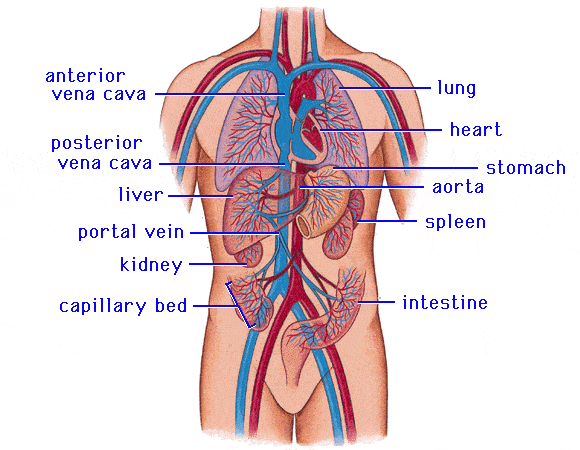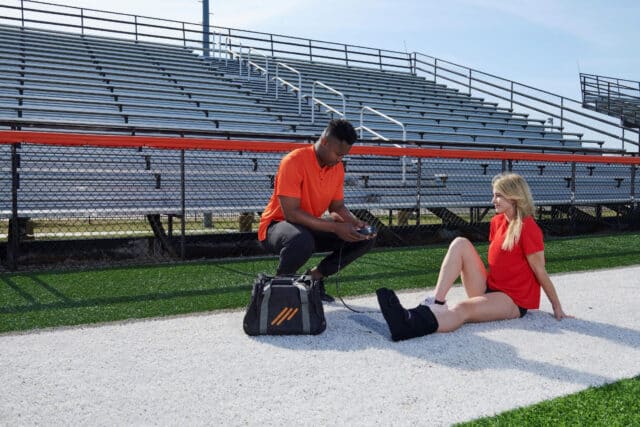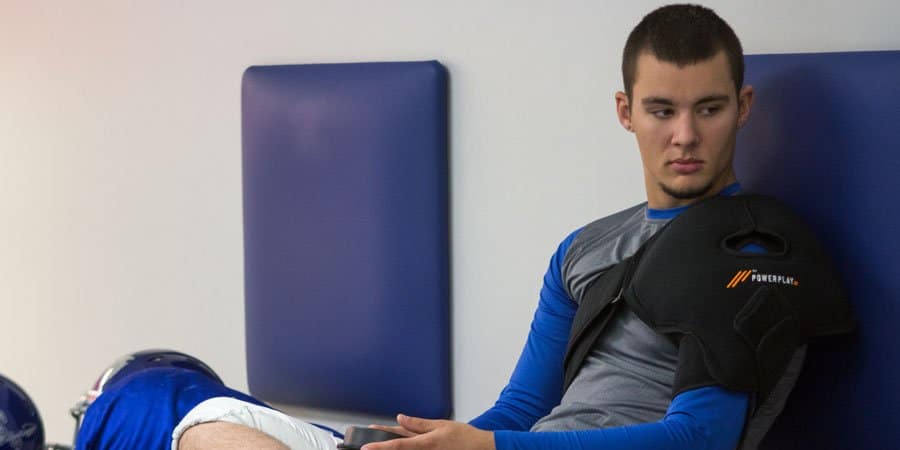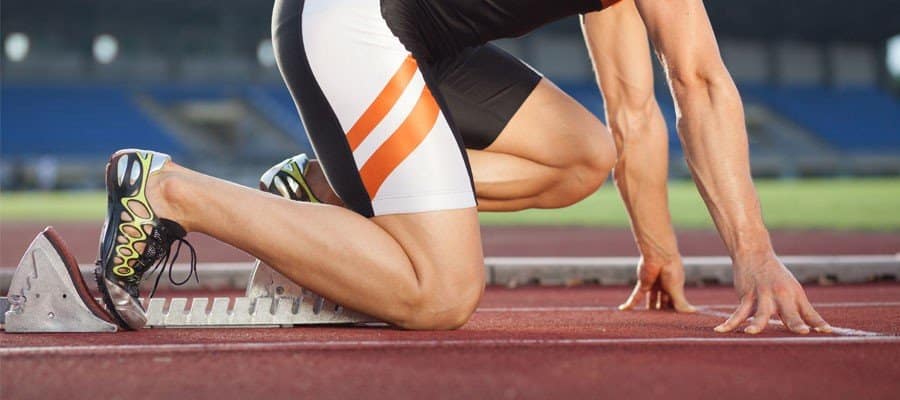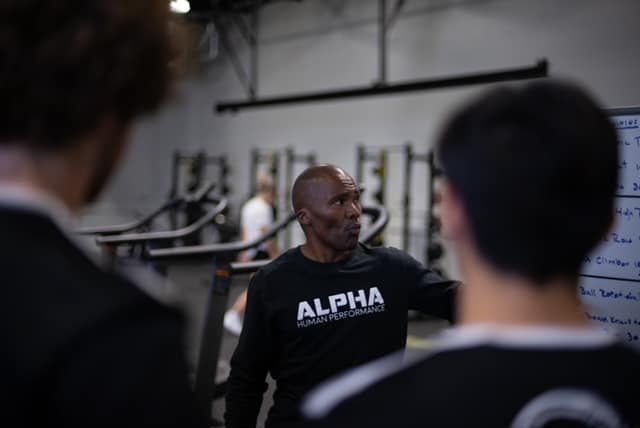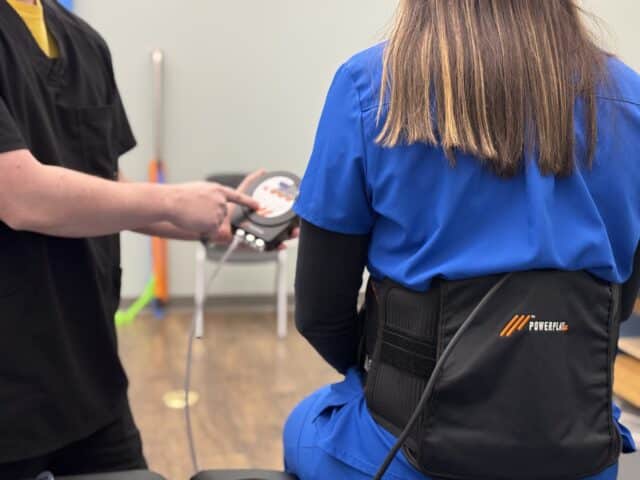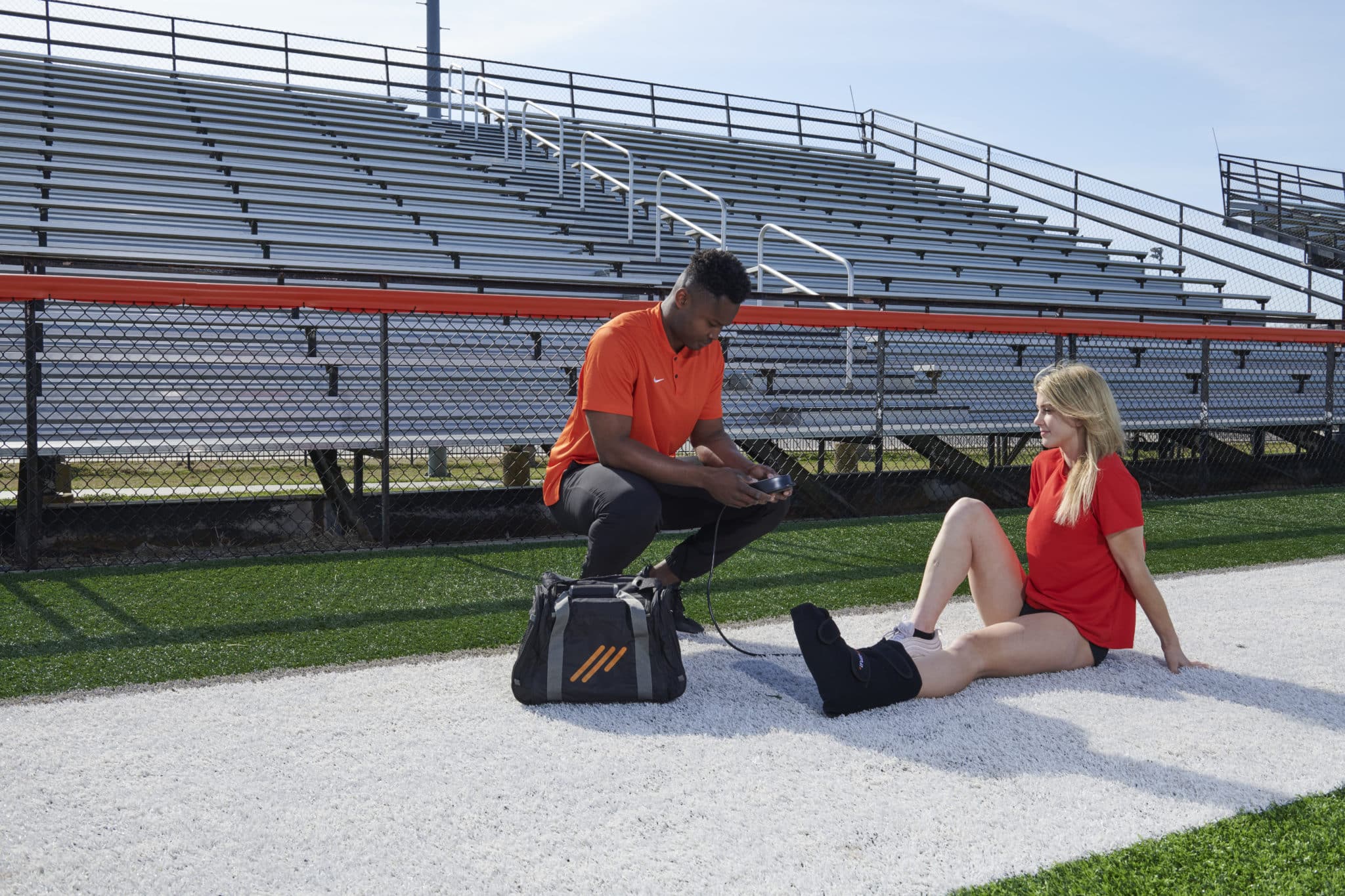By Dr. Donna Krutka, MD
All too often athletes ignore their recovery. They compartmentalize their thinking into areas of: training, racing and resting. When you break down the recovery process it becomes clearer why poor recovery leads to poor performance.
Let’s list some of the systems of the body that are involved in the recovery period after an athletic performance. The distance, speed and duration of the performance will also generate differences in the recovery, but all of the efforts have similar principles.
12 Systems Involved in Athletic Recovery
- Heart and Lung recovery
- Muscle recovery
- Bone recovery
- Soft tissue and Fascial recovery
- Renal recovery
- Lymphatic recovery
- Hepatic recovery
- Adrenal recovery
- Digestive and or nutritional recovery
- Brain (neuronal) recovery that includes areas of vision, auditory, proprioceptive, coordination, and more
- Heat or energy dissipation and replenishing
- 12. Fluid recovery
HEART RECOVERY
It is often very obvious that after a race or training session, the heart needs to slow down and go back to a resting or homeostatic condition. Sometimes we think of this as something that happens very quickly and in under control within minutes. Sometimes we even know what our Maximal heart rate (rate at the anaerobic threshold), or what the recovery heart rate might be after interval training. But even after the heart rate begins to slow down, the recovery phase is not over. The rate of the heart during exercise increases the blood supply not only to the entire body by way of the contraction, but the heart muscle has been consuming oxygen in order for the intensity of the high heart rate to occur and the metabolic products produced inside the heart muscle itself needs to be flushed and dissipated and sometimes that may take hours. During that recovery time the blood flow to the heart diminishes which in itself may cause cardiac irritability and dysrythmias.
This is when slowly winding down the exercise which may be known as the “cool down” period is initiated. Without this cool down period, the heart can have serious complications that can even be fatal.
After the cool down, more time for recovery is needed in the form of significant slowdown in all activity. Sitting or lying down with feet elevated and resting for however long is needed to allow for recovery. The longer the duration or the higher the intensity, the longer this extended rest in needed for the heart muscle to recover.
LUNG RECOVERY
Lung function is incredible. It is this system that retrieves the vital gas of oxygen that our bodies run on from the air environment, pull it into our body through our mouth, oral airway, to our bronchi, then into the myriad of small alveoli so that it can diffuse across the lung tissue into the blood stream to be distributed to the rest of the body. We cannot live or function optimally without oxygen, and what an amazing delivery system our lungs provide!
When we increase the respiratory effort during training or racing, we are asking the lungs to also increase their work in order to deliver what is needed to increase the athletic requirements. What an amazing phenomena that they meet the demand to provide increased oxygenation that is asked of them! Just think about that?! But after the effort is complete, they too have to slowly go back to homeostasis. The increased effort of the lungs has moved red and white cells, platelets and extravascular fluids into the lung tissue itself. Now, the blood flow is decreased and the metabolic byproducts of the effort have to be dissipated and any damage that ensued from the effort has to be repaired. This too may take hours and even days depending upon the intensity and duration of the body’s effort. If an individual has a condition such as asthma, the repair may take longer. Allowing the lungs to recover is essential to the performance in the next athletic challenge that is ensued.
MUSCLE RECOVERY
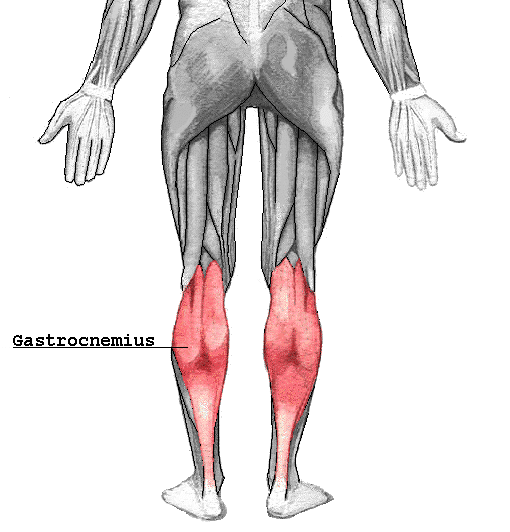 It is this aspect of athletic performance that most research and emphasis has been given over the many years of studying athletic recovery. And many of us athletes only focus on this repair. The muscles are the powerhouse of the body, which means they generate heat, which must be eventually dissipated. This is why ice baths have long been suggested to immediately cool down the muscles. Sitting in a cool (ice may be preferable) bath stops the inflow of fluid to the muscles, cuts back on the pain producing substances and provides immediate anesthesia to the muscles and soft tissue. Over the next few hours, gentle massage can also help remove the pooling of the body tissue fluid that has occurred from the athletic performance that in the end can cause soreness and that sluggish feeling. Good examples of self-massage products are The Stick, or Trigger Point System tools that allow one to work out the tightness and soreness that the muscles experience from the athletic effort. Stretching also is indicated to allow the muscles to lengthen after intense contracting the muscles endured during exercise. These tricks of recovery may be needed for days after the performance. A great Yoga Recovery class can also be helpful.
It is this aspect of athletic performance that most research and emphasis has been given over the many years of studying athletic recovery. And many of us athletes only focus on this repair. The muscles are the powerhouse of the body, which means they generate heat, which must be eventually dissipated. This is why ice baths have long been suggested to immediately cool down the muscles. Sitting in a cool (ice may be preferable) bath stops the inflow of fluid to the muscles, cuts back on the pain producing substances and provides immediate anesthesia to the muscles and soft tissue. Over the next few hours, gentle massage can also help remove the pooling of the body tissue fluid that has occurred from the athletic performance that in the end can cause soreness and that sluggish feeling. Good examples of self-massage products are The Stick, or Trigger Point System tools that allow one to work out the tightness and soreness that the muscles experience from the athletic effort. Stretching also is indicated to allow the muscles to lengthen after intense contracting the muscles endured during exercise. These tricks of recovery may be needed for days after the performance. A great Yoga Recovery class can also be helpful.
BONE RECOVERY
The skeletal system is our support system and has often taken the brunt of the impact of athletic performance, particularly when we are engaged with upright athletic performance. This constant pounding on the pavement, for example after running, puts stress on the skeletal system. If the boney matrix is not strong enough, or if it has been asked to provide “overuse” support, it may break down. Allowing for bone repair is essential. Eating a recovery diet high in calcium and Vitamin D can be helpful and must be consistently provided to the athlete. If attention is not paid to this area of recovery then such conditions as stress fractures can occur.
SOFT TISSUE AND FASCIAL REPAIR
Most of the post training and exercise pain that the body experiences is from soft tissue or fascia. These parts of the body have limited blood supply and often get stiff or tight requiring an enormous amount of effort to stretch massage or heal. It is the thick layer of tissue that surrounds the muscle and tendons that can cause limitation of motion and pain with movement that needs to be rested, massaged, and stretched. If one has an unusual and unprecedented sort of pain after an athletic effort, think first of facial pain. Again, stretch and massage these areas of pain.
RENAL RECOVERY
The kidneys are amazing. They filter all of the fluids that we ingest or that are produced by the process of basal and thermal metabolism. After an athletic effort, incredible amounts of byproducts are produced that need to be released from the body. If the athletic effort did not include enough fluids during the performance, the kidneys will be backed up and not allowed to filter the waste products. It is imperative to give them their due measure of fluids to cleanse the body of its toxins. If enough fluid is not provide, the
kidney will shut down the filter process in order to compensate so that the cardiovascular system has its due amount of fluid to keep the heart pumping sufficiently. Indeed, hydration is not only important to allow the heart to pump adequately, but to also allow the kidney to flush the body of toxins. Thus, for hours and days after an effort, one needs to flood the system with adequate water, adding salt when appropriate for salt loss during hot weather.
LYMPHATIC RECOVERY
The lymphatic system is the system of the body that moves tissue fluid from the tissue to the cardiovascular system. This is the fluid that is outside of the vascular system such as is in the skin, muscles, soft tissue, and other parts of the body where fluid accumulates. A large amount of fluid will pool in these areas after athletic performances. The lymphatic system does not have its own “pump” system and needs to be helped by movement of the muscles. This is the reason compression products were introduced for athletic recovery. Compression should be applied as soon as possible during the recovery phase and utilized for several days, again depending upon the type of athletic event that occurred. There are new market aids to the recovery of lymphatic fluid that can be used, such as the sponsor of this blog, The PowerPlay which provides a portable cold compression unit.
HEPATIC RECOVERY
Perhaps you remember the term glycogen? This is the substance that stores the body’s glucose in the liver in the form of glycogen. After a prolonged race or training effort, our body’s glycogen is diminished and must be replenished. But the liver also orchestrates most of the body’s metabolic pathways in the area of fat and carbohydrate metabolism. Enzymes and coenzymes are connected and reconnected in the liver. Allowing the liver to again repair damage and resynthesize substances is vital. Again, good nutrition and fluid is necessary for the liver to do its work, and time is needed for repair.
ADRENAL GLAND
The adrenals are often forgotten about as to their function is every part of life. They are critical. Their function includes regulation of blood sugar levels, being part of the immune response, producing the substance that produces sex hormones. But the function that most people are aware of is their production of hormones in the “fight or flight”, i.e. adrenalin, or epinephrine. They also produce the hormone cortisol that is involved with modulation of stressful situation. When intense exercise occurs, adrenaline is released from the adrenal gland. This plays a part in providing the release of glucose to be available to our cells during the exercise experience. But if the intensity of the exercise continues, the body can release cortisol into the blood stream, which when it is present in too high of a level, can cause negative effects on the body, such as mental fatigue, decrease in energy levels and decrease in “sex drive.” Allowing the body to recover will help prevent over production of cortisol, which gets the body out of the cycle of “over training.” Over training is the condition associated with tiredness, low blood pressure, and disturbed sleep patterns and lack of sex drive and social motivation. Periodization in training can help keep people out of this debilitating cycle, and the time it may take to recover may be related to the amount of time without proper rest and recovery that occurred before the over training took effect.
DIGESTIVE AND NUTRITIONAL RECOVERY
Fluids and post exercise nourishment have long been studied and are well known to athletes. An abundance of literature suggests rapid infusion of calories after athletic effort particularly in the form of adequate protein and carbohydrates. Food with adequate amount of salt is also important if the effort was at a time of high sweat production, such as indoor competition or hot weather. If hypotonic fluids were ingested (low sodium fluids, such as water only) in abundance, careful replacement of salt will provide the gastrointestinal tract to be able to absorb and digest the recovery meals. Persistent vomiting or nausea may suggest low blood sodium and drinking such drinks as 7-up or Sprite with a bag of thin potatoes chips may allow for replenishing the salt, sugar and water to a level that normal digestion can take place and help absorb the fluids without vomiting.
BRAIN RECOVERY
Many athletic events require good visual skills, cerebellar functioning, proprioceptive balances, rapid neurological responses, and fastidious mental thinking. All of these functions need to recover. This requires restful sleep, reduction of stimulation, decrease auditory bombardment, and stillness. The brain needs to relax and restore the dopamine and norepinephrine that was used in the athletic processing. Endorphins are the natural “painkillers” of the body and their production is sometimes the reason why athletes train and compete as they do. Production and replenishing of the brain’s endorphins occur during recovery. Without adequate recover, the ultimate sense of “relation” may not occur.
HEAT AND ENERGY DISSIPATION AND FLUID REPLACEMENT
As mentioned before, the production of heat in the athletic performance is a byproduct of effort. When an intense effort ensues, so does the production of heat occur. The body deals with dissipation of heat in various ways: The respiratory system exhales warm air, the body sweats to produce a convection release of energy, the blood is shunted to the skin’s surface to release heat. But we need to help the body by ingesting cool and abundant fluids quickly. Getting out of the sun is important and removing wet clothes so that shivering does not take place after an event. Food ingested helps the heat production to transfer to the digestive functioning and again is a form of release of the generated heat production of exercise. The ingestion of fluids allows the kidney to excrete the warm urine and then the filtering of the blood through the kidney also serves as a cooling mechanism. All of these processes need to be occurring immediately after the event is complete, but again for a prolonged event, the time of replenishing and cooling will take longer. One needs to be mindful to take the proper days of recovery needed for the kind of event that was performed to once again get the body’s fluid level to homeostasis.
SUMMARY
Recovery is sometimes the last part of the puzzle that the athlete builds into his or her training. If this process is bypassed, the athletic performance will be compromised. Indeed, to get an athlete to take the time to recover is some of the hardest part of the training process for an athlete to embrace. But if a little more comprehensive look at the body’s functioning during athletic performance is studied, it makes great sense to pay a lot more attention to the recovery period than the athlete sometimes allows. Have fun with recovery. Go to the movie or take a weekend trip to the mountains or to a neighboring get away. After replenishing all of the body’s systems, the next performance will even be better than the last. Remember, athletic performance can be both for enjoyment as well as success.
 Dr. Krutka is a Pediatrician and world class triathlete. She has completed one IRONMAN World Championship in Kona, HI, won her age group at US Nationals and qualified for Team USA and competed in Worlds multiple times. She is a certified ACE Health Coach, a mother of six, grandmother of six and the wife of an equally triathlon-obsessed husband.
Dr. Krutka is a Pediatrician and world class triathlete. She has completed one IRONMAN World Championship in Kona, HI, won her age group at US Nationals and qualified for Team USA and competed in Worlds multiple times. She is a certified ACE Health Coach, a mother of six, grandmother of six and the wife of an equally triathlon-obsessed husband.

